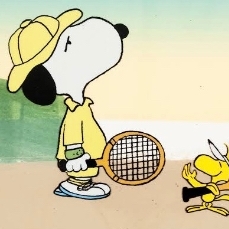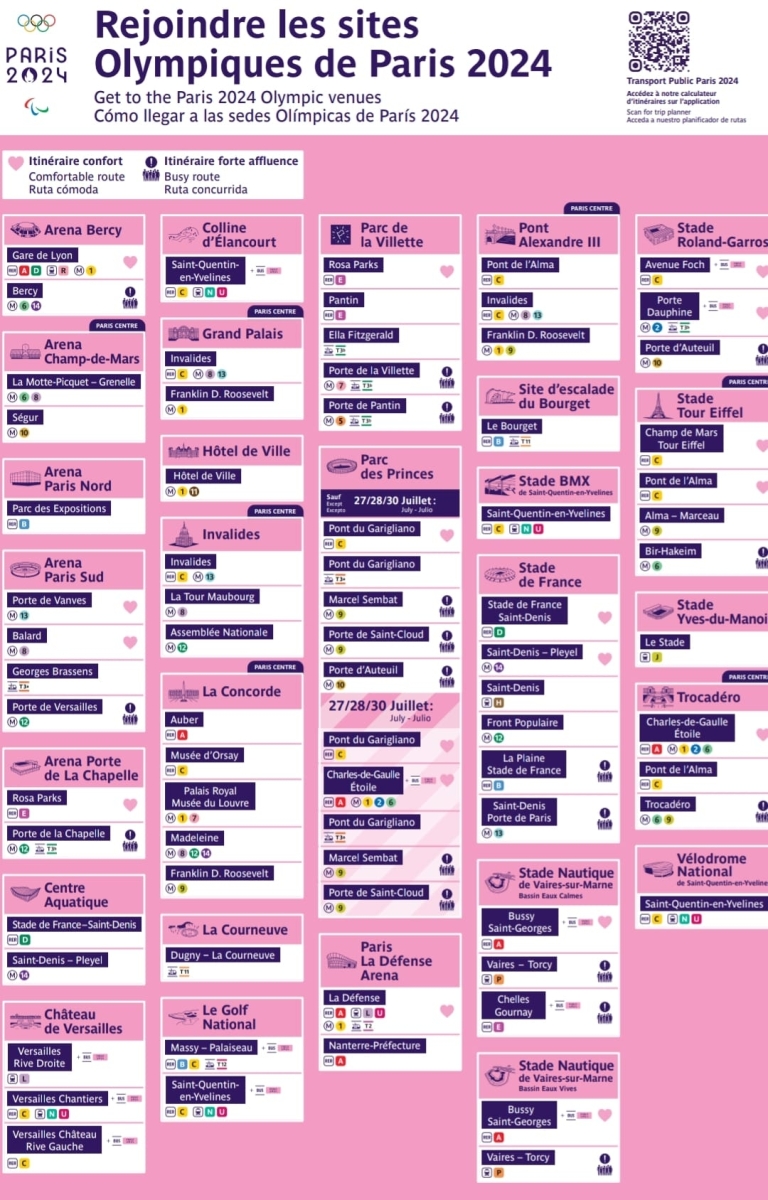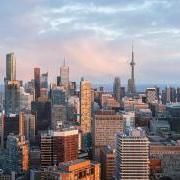Leaderboard
Popular Content
Showing content with the highest reputation since 03/27/2024 in all areas
-
Athletics 2024 Discussion Thread
Gianlu33 and 10 others reacted to OlympicIRL for a topic
11 points -

Summer Olympic Games Paris 2024 Unqualified Nations
canadafan2024 and 8 others reacted to Olympian1010 for a topic
should now have a representative in fencing I’ll be pretty happy if they can get additional quotas in archery, athletics, or any other sports.9 points -

Fencing CPE American Olympic Qualifier 2024
Wumo and 8 others reacted to Olympian1010 for a topic
QUOTA!!!!!!!!!9 points -

Sailing WS Semaine Olympique Française 2024
copravolley and 7 others reacted to hckošice for a topic
Imagine Slovakia qualify in Sailing and failing in Canoeing Sprint ... this world is really upside down lately8 points -

[OFF TOPIC] General Chat
Noorderling29 and 7 others reacted to Josh for a topic
Hi everyone! A bit of a family emergency is going on right now (my dad isn’t doing too well, he’s on his way to the hospital as I type this), which may explain my lack of inactivity on Totallympics and updating all of the various sporting events If anyone wants to post any of them that’ll be appreciated, and if not then I’ll post them when I’m fully back! Actually, it might even be within a few days. I’ve just thought about it, and when I’m not busy visiting him at the hospital, I might choose to watch/share results of some sports. Bit of a confusing response I know, but to explain my thought process, watching (along with playing, but irrelevant point) sports and sharing results on Totallympics are two of my favourite things to do. Trying to not worry too much when personal problems is hard for me, and it might be what I need to not freak out and have mental breakdowns every couple of minutes. But we’ll see.8 points -

Weightlifting IWF World Cup 2024
Roamingrover86 and 7 others reacted to MHSN for a topic
61kg quotas, no change in top 10 even though some of them improved their results and next in line in case of reallocation:8 points -
Rustam Djangabaev (6th in current ranking at +102kg) is tested positive for doping, his name had been removed from the World Cup start list, which means he is not going to Paris 2024 anyway that's his 2nd time, we won't see him for a while, maybe forever.8 points
-

Swimming Qualification to Summer Olympic Games Paris 2024
Orangehair43 and 6 others reacted to Josh for a topic
I’m sorry, but I can’t take any of her results seriously when she was one of the 23 Chinese swimmers who tested positive for TMZ…7 points -
FIG finally updated the World Cup ranking. the 2nd Vault quota goes to Olfati , he scored a zero in his last event (landed on his head !!) and finished last. needed a miracle to qualify and that happened. first ever quota in this sport.7 points
-
HOLY. FUCKING. SHIT. (sorry for swearing) Katzberg WITH A HUGE PB OF 84.38m in Round 5 of men’s hammer throw7 points
-
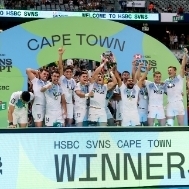
Sailing WS Semaine Olympique Française 2024
Makedonas and 6 others reacted to MatiReimundo for a topic
Mixed 470 - 4 quotas Favorites: 1. 2. 3. 4. Possible: Low Chances: ------------------------------------ Mixed Nacra 17 - 4 quotas Favorites: 1. 2. 3. 4. Possible:7 points -
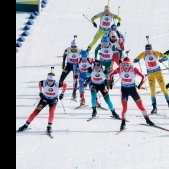
Athletics 2024 Discussion Thread
Wumo and 6 others reacted to Biathlonfan for a topic
LADIES AND GENTLEMAN,IT'S OFFICIAL .MYKOLAS ALEKNA HAS THROWN 74.41 .7 points -
Quotas in men’s and women’s team sprint in track cycling through the Olympic Rankings!7 points
-
For two reasons: 1, For internal fairness. Imagine you are the champion of 59kg left unselected, but your teammate 49kg is merely a silver medalist but selected. You will definitely feel unfair and it’s not good for the team atmosphere. Real champions should always prioritize the selection regardless of rivals’ attendance. 2, You just never know if North Korea will successfully lobby IOC or IWF for a wild card, maybe only one category per gender. I personally think it possible. No one can guarantee anything until the OG begins.7 points
-
Cycling - Men's road race Swimming - Women's 200m breaststroke Waterpolo - Women's tournament Rowing - Men's Eight Hockey - Women's tournament Athletics - 4x400 mixed relay Track cycling - Men's and Women's keirin Judo - Women's -63kg Beach volleyball - Men's tournament Handball - Women's tournament Today I arranged two weeks off from work during the Olympics. Couldn't be happier6 points
-

Swimming 2024 Discussion Thread
Topicmaster1010 and 5 others reacted to EselTheDonkey for a topic
Lukas Märtens 400m Freestyle 3:40,33 at the German National Championships in Berlin.6 points -

Men's Artistic Gymnastics UEG European Championships 2024
rafalgorka and 5 others reacted to Adriano for a topic
GEORGIOU Marios with quota.6 points -
Since no one has posted about it already, I’ll do it myself. Quotas Women’s Vault: Women’s Uneven Bars: Women’s Balance Beam: Women’s Floor: Men’s Floor: Men’s Pommel Horse: Men’s Rings: Men’s Vault: Men’s Parallel Bars: Men’s Horizontal Bar:6 points
-
Some Chinese Olympic Trials link package: Schedule and Result:https://swm-info.ydfuture.com/ Prelims Start List:https://weibo.com/5277693139/5024583862453267 https://weibo.com/5277693139/5024584195638022 Livestream: CCTV5(only finals and not everyday) https://tv.cctv.com/live/cctv5/index.shtml?spm=C73465.PhvcG4VlqNFF.EyAwthc54FQC.16 CCTV app link(all prelims and finals may need to register) 4.20 prelims https://www.yangshipin.cn/#/live/detail?pid=600174944 4.20 finals https://www.yangshipin.cn/#/live/detail?pid=600175006 4.21 p https://www.yangshipin.cn/#/live/detail?pid=600174947 4.21 f https://www.yangshipin.cn/#/live/detail?pid=600175007 4.22 p https://www.yangshipin.cn/#/live/detail?pid=600174949 4 22 f https://www.yangshipin.cn/#/live/detail?pid=600175031 4.23 p https://www.yangshipin.cn/#/live/detail?pid=600174948 4.23 f https://www.yangshipin.cn/#/live/detail?pid=600175023 4.24 p https://www.yangshipin.cn/#/live/detail?pid=600174950 4.24 f https://www.yangshipin.cn/#/live/detail?pid=600175027 4.25 p https://www.yangshipin.cn/#/live/detail?pid=600174951 4.25 f https://www.yangshipin.cn/#/live/detail?pid=600174259 4.26 p https://www.yangshipin.cn/#/live/detail?pid=600174955 4.26 f https://www.yangshipin.cn/#/live/detail?pid=600175029 4.27 f https://www.yangshipin.cn/#/live/detail?pid=6001749456 points
-

Sailing WS Semaine Olympique Française 2024
Makedonas and 5 others reacted to MatiReimundo for a topic
Mens ILCA7 - 3 quotas (+1 Emerging Nations Program) Favorites: 1. 2. 3. Possible: Low Chances: -------------------------------------- Womens ILCA7 - 3 quotas (+1 Emerging Nations Program) Favorites: 1. 2. 3. Possible: Low Chances: ------------------------------------- Mens 49er - 4 quotas Favorites: 1. 2. 3. 4. Possible: Low Chances: -------------------------------------- Womens 49er - 5 quotas Favorites: 1. 2. 3. 4. 5. Possible:6 points -

Sailing WS Semaine Olympique Française 2024
Makedonas and 5 others reacted to MatiReimundo for a topic
Based on the results of the World Championship and Continentals, favorites for the quotas should be: -------------------------------------- Mens IQFoil - 6 quotas (+1 Emerging Nations Program) Favorites: 1. 2. 3. 4. 5. 6. Possible: Low Chances: --------------------------------- Womens IQFoil - 6 quotas (+1 Emerging Nations Program) Favorites: 1. 2. 3. 4. 5. 6. Possible: Low Chances: --------------------------------------- Mens Formula Kite - 5 quotas Favorites: 1. 2. 3. 4. 5. Possible: Low Chances: --------------------------------------- Womens Formula Kite - 5 quotas Favorites: 1. 2. 3. 4. 5. Possible: Low Chances:6 points -
and now it's official! the IJF has officially registered Kim Polling's switch from to now she can represent with immediate effect Polling's words on the social media (in Italian...google might be helpful): "Ciao a tutti, mi chiamo Kim Polling e posso dirvi che da oggi posso rappresentare l’Italia. Sono super orgogliosa, grata, contenta e non lo so… ancora mille parole in più per darvi questa notizia. Vi parlo un po’ di me, vivo da otto anni in Italia, mi sono sposata un italiano che si chiama Andrea Regis, anche lui è stato un judoka. Abbiamo una figlia, Aurora, che è nata quasi due anni fa e viviamo a San Mauro Torinese. Ho fatto quest’anno la richiesta all’IJF di cambio nazionalità ed oggi è arrivata la notifica che è stato dato l’ok. Sono davvero super orgogliosa, grata e voglio ringraziare l’Italia, ringraziare l’Accademia Torino, la palestra in cui mi alleno da sette anni e non vedo l’ora per il futuro. Vedremo quello che riesco a fare."6 points
-

Swimming Qualification to Summer Olympic Games Paris 2024
Topicmaster1010 and 5 others reacted to Vic Liu for a topic
Chinese Olympic trials begins tomorrow. The rules is to choose the any best result of 3 events to compare: 1: 2023 WCH individual event finals and meeting OG standard A 2: 2024 WCH individual event finals and meeting OG standard A 3: 2024 trials individual event finals and meeting OG standard A So based on the past 2023 and 2024 WCH, following swimmers already have eligible results and green parts are almost safe enough to guarantee the tickets before the trials. For relay swimmers, mainly considering trials results.6 points -
.jpg.abc6a3b43b2908e8a1e29072667c2d0f.thumb.jpg.82ec747c04b4a51c849f8f110e990412.jpg)
Shooting ISSF Rifle & Pistol Final World Olympic Qualifier 2024
Roamingrover86 and 5 others reacted to phelps for a topic
just asking myself why in this competition are there people that already achieved the qualification (and therefore can't get any other quota place) and/or why tare there those mixed team events that don't award any quota place? nor those events award points for the OQR/WR, therefore are absolutely useless for those who are not in the hunt for a quota place and actually only make a lot of confusion6 points -
Now the only thing France still needs to decide is the venue6 points
-
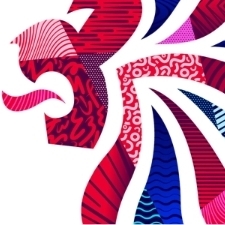
Track Cycling Qualification to Summer Olympic Games Paris 2024
orangeman and 5 others reacted to Rafa Maciel for a topic
Before the action kicks off tomorrow, I thought I'd take a look at the individual track events to see if we are likely to see and changes as a result of Milton. Men's Team Pursuit: Confirmed Quotas: In my opinion, the Olympic field is set - China could spring a surprise and overtake Belgium, but the two teams have been equally matched across the season so it would seem to be unlikely. At a minimum, China need to finish at least 7th and hope that Belgium have an absolute nightmare in order for them to be in with any real chance. Men's Madison: Confirmed Quotas from Team Pursuit: Safe Individual Quotas: Contested Quotas: - 4750 - 4621 --------------- - 4398 All three are counting 2 NC events from 2024 and all have similar discard scores of 10th or 11th. It will be difficult for Switzerland to be able to do enough to overtake Czechia to get into the last quota spot - they'd need to finish at least 8th and keep 3 places between themselves and Czechia. That is something that they have not been able to do so far in the qualification window so it looks like both Austria and Czechia should qualify for Paris. Men's Omnium: Confirmed Quotas from Team Pursuit: Expected Quotas from Madison: Safe Individual Quotas: Continental Quota: Contested Quotas: - 1432 - 1394 --------------- - 1231 - 1189 There is potential for change in the final quotas in this event. Colombia should be safe as they have only competed in 2 NC events across the last 2 years whereas Indonesia is already counting their two 2024 NC events. Kazakhstan will need to finish higher than 16th to be able to overtake Indonesia. Hong Kong may have left themselves with too much to do after their poor result in the 2nd leg of last year's NC. For the continental quota, Egypt will be safe by virtue of the fact that South Africa are not competing in Milton despite being just 40 points off the quota. If I was a betting man, I'd say that Colombia and Kazakhstan will likely take the last 2 quotas for the men's endurance events.6 points -

Athletics Qualification to Summer Olympic Games Paris 2024
maestro and 5 others reacted to Cinnamon Bun for a topic
Will do a massive update on all the athletes qualified since my last update at the start of March after tomorrow's races.6 points -
I find this to watch this tournament online https://play.tycsports.com/polideportivo/copa-de-las-americas-tiro-dia-1-id573834.html6 points
-
Update on that https://www.instagram.com/reel/C5MCnt6s_Ue/?igsh=cnc1OGc5bGNlY3l4 @CCB @canadafan2024 @Wumo @Laraja @Quasit6 points
-
Entries for the American Continental Qualification on April 8-9 38 archers from 17 NOCs in men as well as 32 women from 14 NOCs will compete 2 individual spots for each gender. Among the “surprise” entries are with 2 men, & with full men teams, and entering 3 men and same amount of women Of course, D’Amour is in, and should be one of the favorites, along & in men’s. In women’s, the quotas “should” be distributed between & .6 points
-
6 points
-

Sailing WS Semaine Olympique Française 2024
Roamingrover86 and 4 others reacted to Jur for a topic
I think IQFOIL finished! MEN'S: + ENP . There's another quota up for grabs (African reallocation) we don't know for sure who it goes to. If its ENP as I think, goes to , if not, it goes to . WOMEN'S: + ENP . There's another quota up for grabs (African reallocation) that goes to either way5 points -
Ethan Katzberg with the meet of his life at the Kip Keino Classic. By a fucking mile. Before today his PB in men’s hammer throw was 81.25m at the 2023 World Championships, where he became a surprise World Champion. Starts off with 81.79m in R1, then 82.06m in R2, 81.50m in R4, 84.38m (!! yes you heard me right) in R5, and 83.26m in R6. That’s 5 marks under his previous PB (the other one was a foul), and a 3.13m improvement. Edit: Also moves him to #9 on the all-time list, none of the athletes above him are still competing. Not to mention he’s only 21 (!) years old, in an event where athletes don’t peak until later on in their career. @intoronto @Topicmaster1010 @james89 @orangeman @NearPup5 points
-

Athletics WA Diamond League 2024
Topicmaster1010 and 4 others reacted to Josh for a topic
WR FOR MONDO DUPLANTIS IN MEN’S POLE VAULT 6.24m!!!!!!!5 points -
Women’s wheelchair basketball team qualified for the Paralympics, after defeating Algeria 88-30 at the IWBF Women’s Paralympic Qualification Tournament!5 points
-

Swimming
orangeman and 4 others reacted to Topicmaster1010 for a topic
I don't know where else to post this but Canada has been upgraded to a bronze medal in the 4x200m freestyle relay at Tokyo 2020. China got DQ'd over a doping violation. This brings the total medal count to 25 and Summer McIntosh now has an Olympic medal5 points -

Athletics 2024 Discussion Thread
Biathlonfan and 4 others reacted to hckošice for a topic
I can not stop laughing. This just made my day5 points -

Swimming Qualification to Summer Olympic Games Paris 2024
Wumo and 4 others reacted to Topicmaster1010 for a topic
2024 Danish Open - Copenhagen (DEN) April 11th - April 14th 2024 Meet Results No new OQTs were achieved The following 7 swimmers have been nominated for Olympic selection Women (7): Elisabeth Sabroe Ebbesen - 4x100m freestyle relay Julie Kepp Jensen - 50m freestyle Helena Rosendahl Bach - 200m butterfly, 100m butterfly (OCT) Martine Damborg - 4x100m freestyle relay, 4x100m medley relay Schastine Tabor - 4x100m freestyle relay, 4x100m medley relay Signe Bro - 4x100m freestyle relay, 4x100m medley relay Thea Blomsterberg - 200m breaststroke, 4x100m medley relay *Team will be confirmed at a later date. Events are my prediction. ** In addition, Casper Puggaard also achieved an OCT and may be nominated for a universality quota. Source5 points -
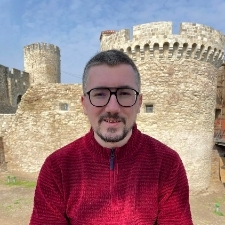
Women's Handball IHF Olympic Qualification Tournaments 2024
Dennis and 4 others reacted to Benolympique for a topic
Qualified Olympic Games 20245 points -

Swimming
Surlympics and 4 others reacted to Topicmaster1010 for a topic
Solid results in the 200 free. Obviously Summer is a beast but I was definitely more excited about MSH going 1:56.76. 1:58s from Jansen and Brousseau are decent results at this point in time and of course it's great to see Penny getting better. Also in the 100m backstroke, 15 year old Madison Kryger set a new PB of 1:00.81.5 points -

Badminton Qualification to Summer Olympic Games Paris 2024
Jinzha and 4 others reacted to Olympian1010 for a topic
If you really want to qualify, you’d have @Josh award the quotas to your closest rivals midway through the competition5 points -

Swimming Qualification to Summer Olympic Games Paris 2024
Topicmaster1010 and 4 others reacted to Josh for a topic
2:19.01 in the final!5 points -

Archery WAA American Olympic Qualifier 2024
Topicmaster1010 and 4 others reacted to Josh for a topic
WITH ANOTHER QUOTA!!!!!!! Bit lucky near the end, but so so happy for Nicholas D’Amour5 points -

Swimming Qualification to Summer Olympic Games Paris 2024
maestro and 4 others reacted to Topicmaster1010 for a topic
British Qualification Tracker (after Day 2) Priority 1: 1st place finishers with nomination time (guaranteed selection) (5 swimmers) Freya Colbert - W 200m Freestyle, W 4x200m Freestyle Relay Kathleen Dawson - W 100m Backstroke Keanna MacInnes - W 200m Butterfly Ollie Morgan - M 100m Backstroke Adam Peaty - M 100m Breaststroke Priority 2: Relay swimmers (guaranteed selection) (3 swimmers) Medi Harris - W 4x200m Freestyle Relay Lucy Hope - W 4x200m Freestyle Relay Abbie Wood - W 200m Freestyle , W 4x200m Freestyle Relay Priority 5: 2nd place finishers with nomination time (2 swimmers) Jonny Marshall - M 100m Backstroke Laura Stephens - W 200m Butterfly Candidates for Priority 4 - Discretionary Picks Freya Anderson - W 100m Freestyle, W 200m Freestyle (injured) Kieran Bird - M 400m Freestyle (OQT) Amelie Blocksidge - W 1500m Freestyle (OCT) Lauren Cox - W 100m Backstroke (NT at World Championships) Kara Hanlon - W 200m Breaststroke (OCT) James Wilby - M 100m Breaststroke (OQT)5 points -
Ukraine asks IOC to investigate russian Russian and Belarusian wrestlers https://mms.gov.ua/news/zaklykaiemo-vidstoronyty-rosiiskykh-bortsiv-vid-kvalifikatsiinykh-turniriv-na-olimpiadu5 points
-
Team Canada at the Paris Summer Olympic Games 2024 News
canadafan2024 and 4 others reacted to james89 for a topic
No surprise but Maude Charron has qualified in weightlifting.5 points -
and the continental quota goes to Randafiarison , she beat the girl from PNG by just 1 kilo. Toua (PNG) lifted 171 yesterday in Group C (which was 1kg better than Randafiarison's previous record) but Randafiarison beat her once again by 172kg today in Group B5 points
-
Based off of that, the contenders for the continental quotas would look something like this: Women’s Foil Europe: Asia and Oceania: Africa: Americas: Women’s Epee Europe: Asia and Oceania: Africa: Americas: Women’s Sabre Europe: Asia and Oceania: Africa: Americas: Men’s Foil Europe: Asia and Oceania: Africas: Americas: Men’s Epee Europe: Asia and Oceania: Africa: Americas: Men’s Sabre Europe: Asia & Oceania: Africa: Americas:5 points




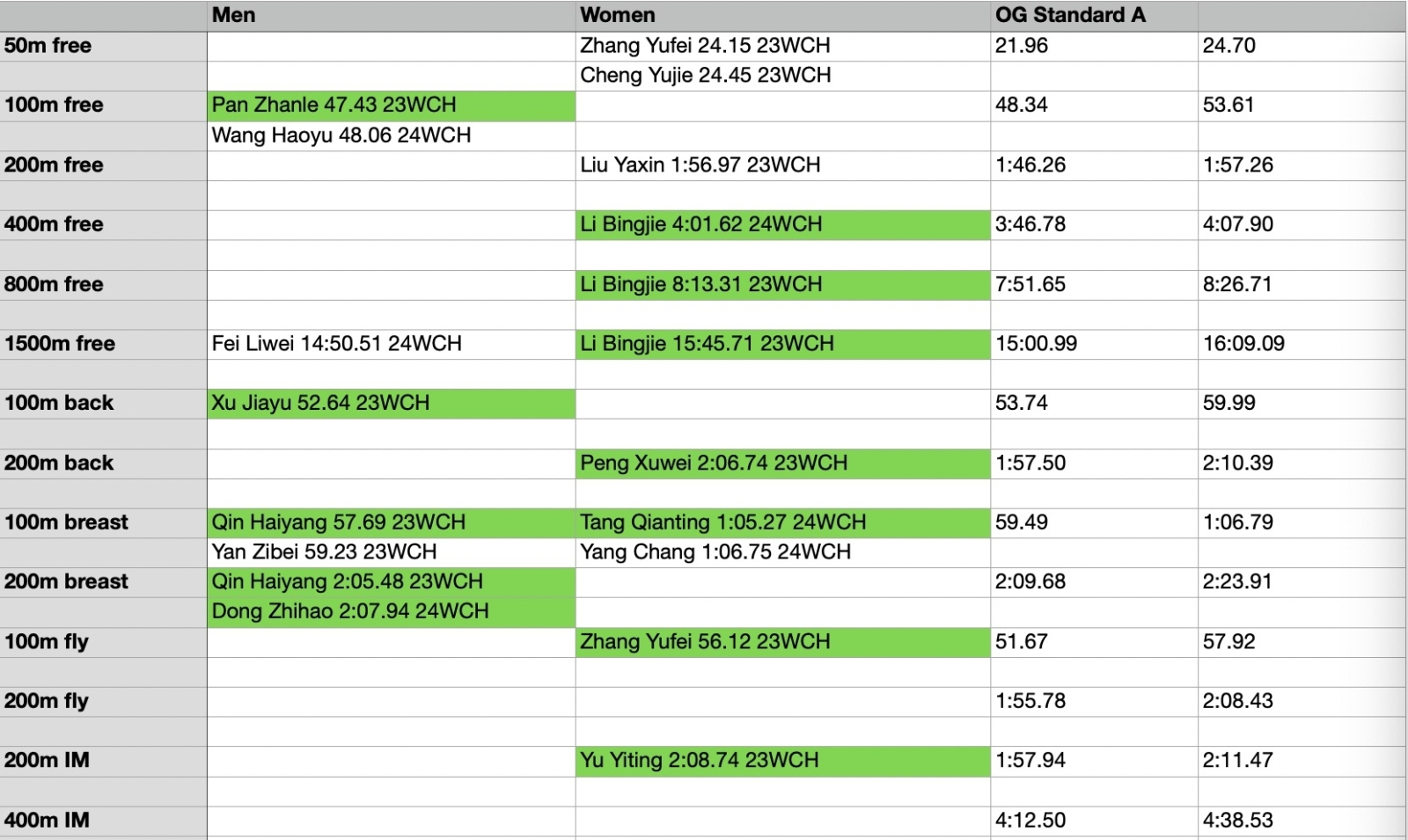
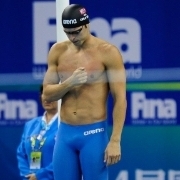
.jpg.e5b0840ef563cae48b46dc0f10a604a7.thumb.jpg.92e5e8dbc7e0d559b26d53b50a12f0b2.jpg)
